The Vivitar Ultra Wide and Slim 35mm film camera (sometimes shortened to VUWS or UWS) was made in China and sold for not much money as a truly basic point and shoot with an unusually wide angle 22mm lens. I imagine they were often bought as novelty gifts and as a first camera for a child so is often referred to as a ‘toy’ camera.
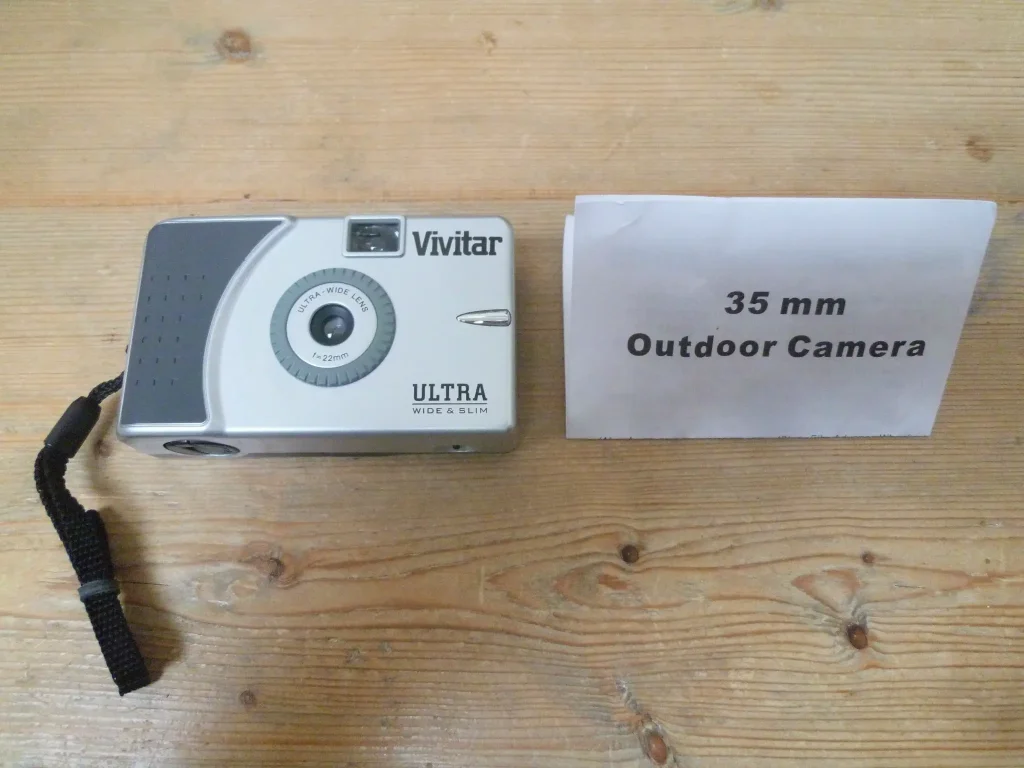
The Vivitar Ultra Wide and Slim certainly feels insubstantial and is ridiculously lightweight – the film roll weighs nearly as much as the camera. It’s entirely plastic and quite fragile, so you get the impression that if you let it slip out of your hands onto a hard pavement it would shatter at your feet. It has a two element plastic lens set at f/11 and a fixed 1/125 shutter speed, and that’s assuming the shutter speed is accurate as I suspect some examples may be rather slower than this. The viewfinder is small but just about useable, although it doesn’t actually fully represent the whole field of view the lens covers. What has made this model a minor if obscure cult is its reputation for distinctive image quality produced by the exceptionally wide angle lens, the striking flare effects when shooting into the sun, the vignetting and surprising sharpness for what you might initially dismiss as just another trashcam.
Given the above, and as an occasional enthusiastic tester of film compacts, I eventually gave in to temptation and bought an unused one on ebay for £16.00. It came with instructions printed on a sheet of paper entitled ‘35mm Outdoor Camera’, which suggests the manufacturers wanted you to be aware that it’s not suitable for interiors and low light photography.
In theory, what the Vivitar Ultra Wide and Slim should be good for is landscapes, cityscapes and street photography in good light. It’s tiny, virtually silent and the 1/125 shutter speed freezes most movement if that’s what you want, although of course you don’t have any other choice. You can also shoot from the hip pretty confident you are likely to capture your subject with that wide 22mm lens. However, most of the front is made from bright silver plastic with bold black print.
Modifying my Vivitar Ultra Wide and Slim
So as a bit of fun I decided to stealth it up by painting some of it matt black and also cut out and stuck on pieces of dark green leatherette I had left over after rejuvenating another camera, and which would protect the parts that get handled and stop the paint rubbing off.
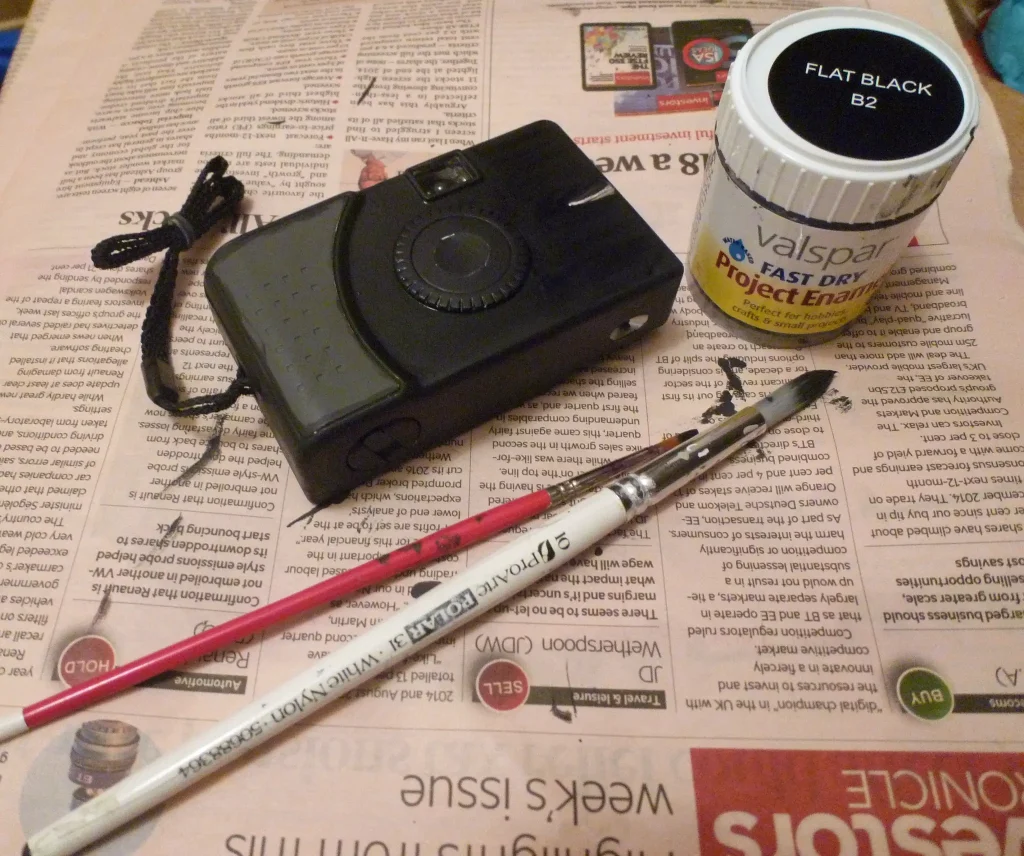
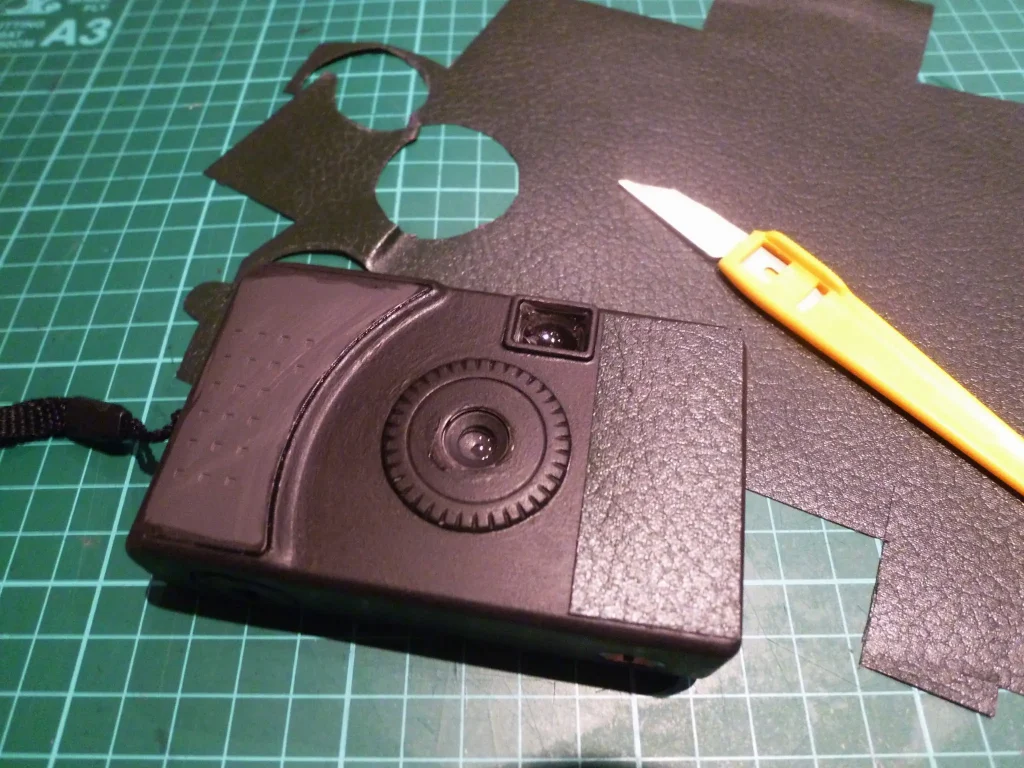
For black and white films I glued on a 37-46mm step-up ring so I could use a 46mm yellow filter when needed. This addition does partly obscure the viewfinder but not so much that you can’t get a reasonable idea of what will be in frame.
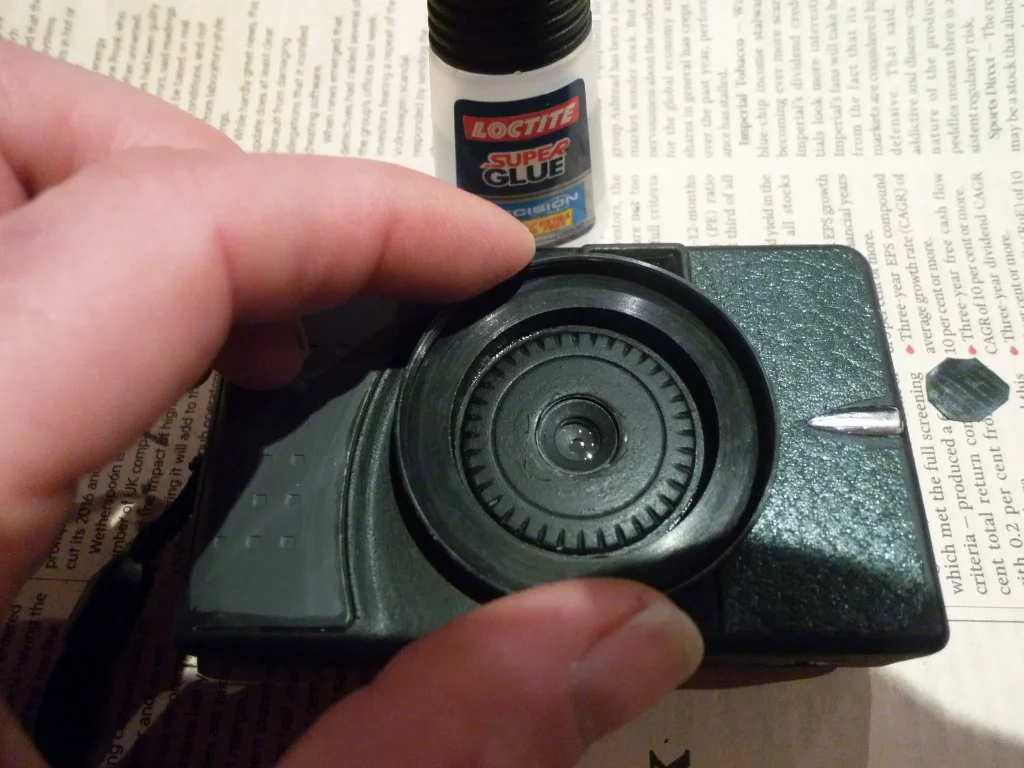
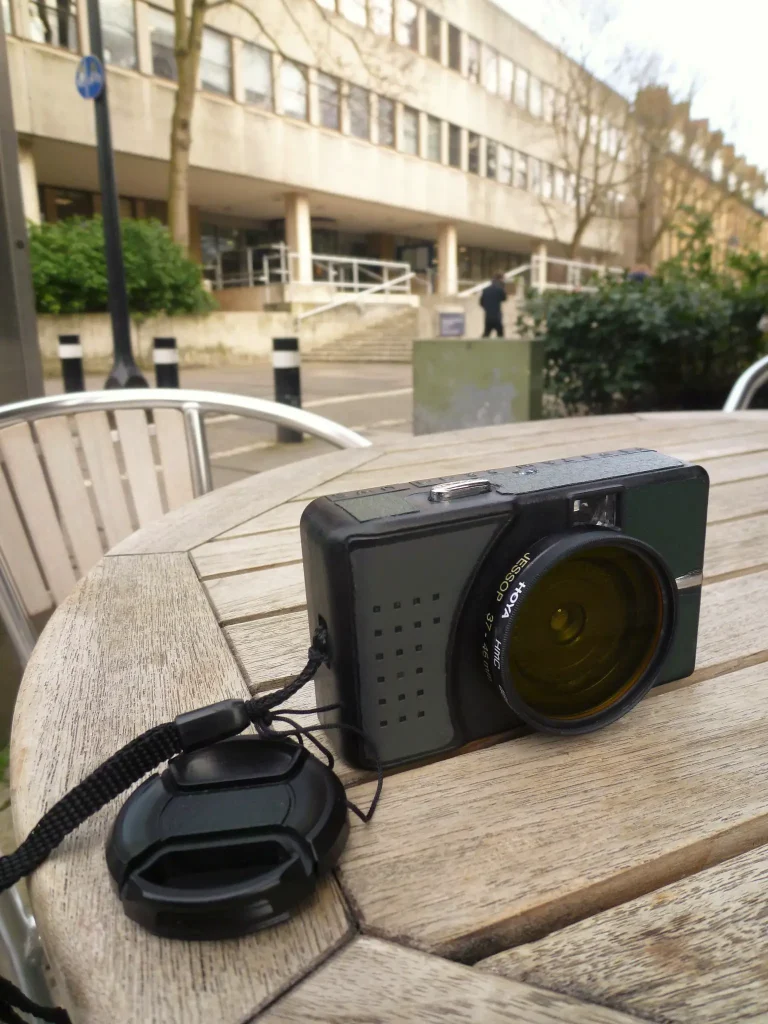
One thing that has been advised by other users is to use a 24 exposure film, not 36, because the winding mechanism is not robust and the stress that develops with a longer 36 roll has the potential to break the little plastic spindle inside. You could use a 36 exposure film and just stop at about 28 frames to be on the safe side.
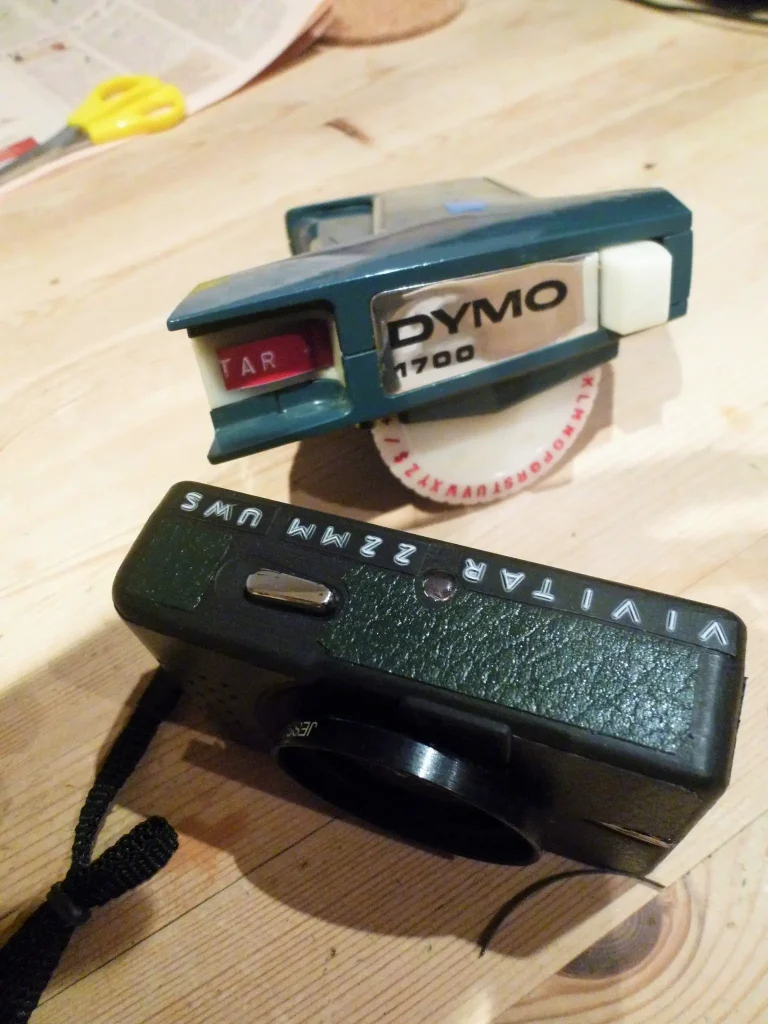
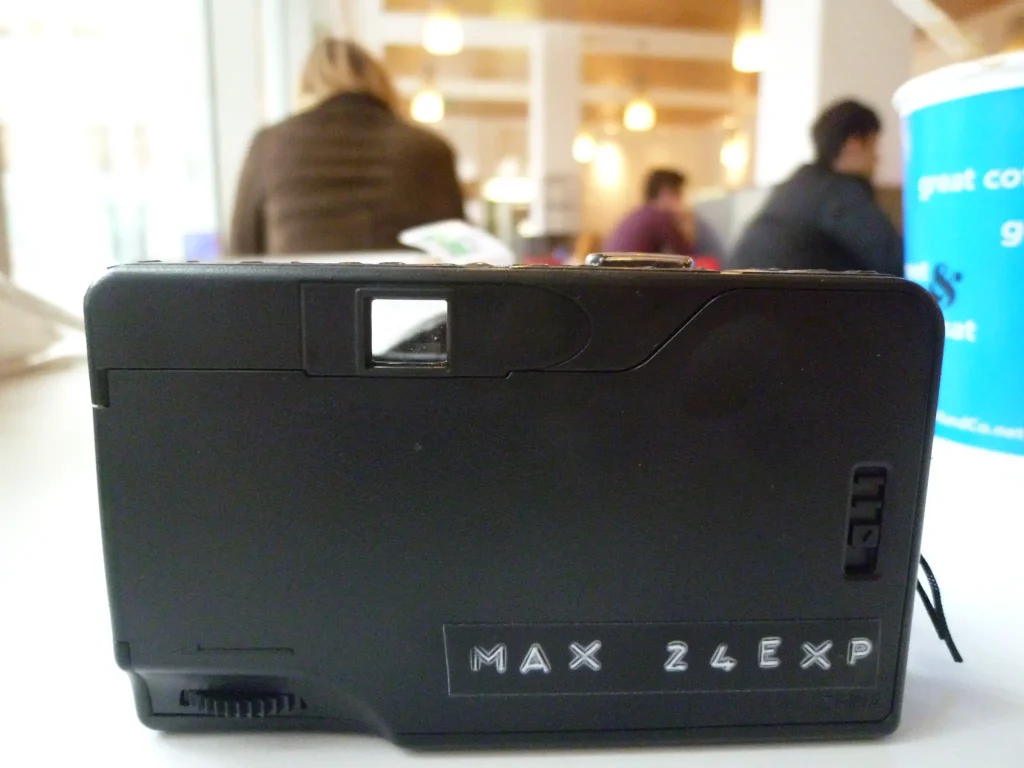
When you load the film and start winding the wheel at the bottom rear of the camera, you will eventually hear a click to indicate the frame is ready, but actually sometimes got two clicks so I’m not sure if I was doing it right. The shutter button requires a disconcertingly extensive push before you eventually hear the click of the exposure. When it comes to rewinding the exposed film I recommend doing so gently as the winding lever is quite delicate.
Apart from the above there isn’t a great deal to say about using the Vivitar Ultra Wide and Slim. It’s so simple as you can’t adjust shutter speed or aperture. Your only control over exposure is your choice of film. In very sunny conditions you could possibly get away with a 100 ISO film such as Kodak Ektar and benefit from its famed colour and sharpness, but in duller or changeable lighting conditions 200 or 400 ISO is more sensible, and I would go for 400 myself. And there’s no flash of course. You could try a faster film such as Kodak Portra 800 but we’re getting into expensive territory there and I’m not sure the camera warrants it. But it’s up to you.
I mentioned the viewfinder not giving you a true picture of what the lens will capture as apparently you see a cropped version, so be aware that if the sun is behind you your shadow could appear in frame even if you don’t notice it in the viewfinder. Also, there must be thousands of photos out there with blurry things appearing on the edges and this is because the lens is so wide, and the camera so small, you can easily have your fingers poking into frame without realising it. If you adapt the camera with a step-up ring and filter as I did then this helps because the combination acts as a tangible barrier to stop your fingers inadvertently creeping into shot. However, more than once I did make the classic mistake of forgetting to remove the lens cap when shooting. I wasn’t sure if the step-up ring and filter would be large enough to avoid intruding into the lens field of view but the only way to find out was to shoot some film, so loaded up with Ilford HP5 I took my pimped VUWS out for a test run to see if its reputation was justified.
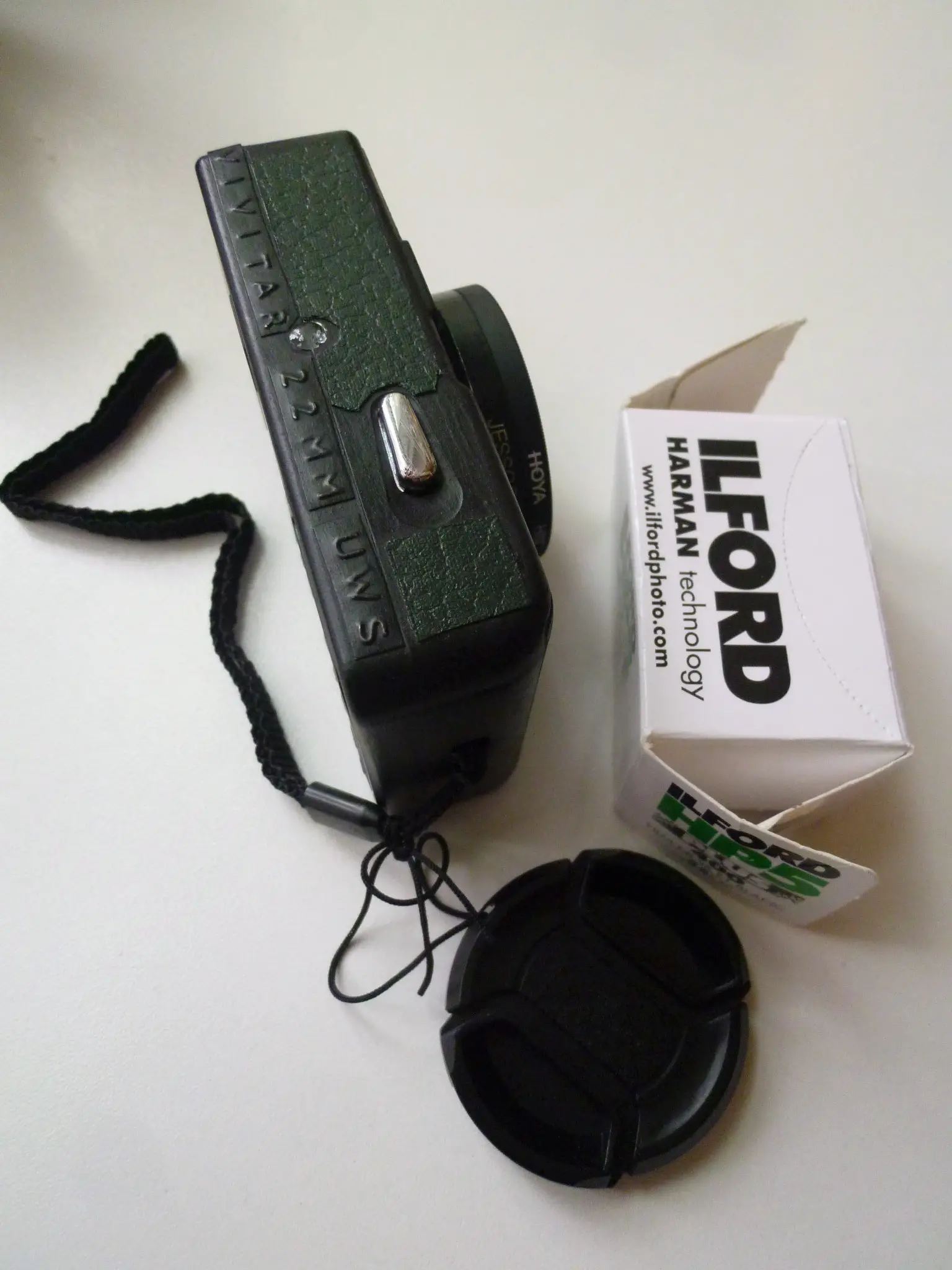
Shooting my Vivitar Ultra Wide and Slim
These shots were taken in Oxford and at Minster Lovell Hall near Witney. Processing by Peak Imaging and negatives scanned with an Epson V370.
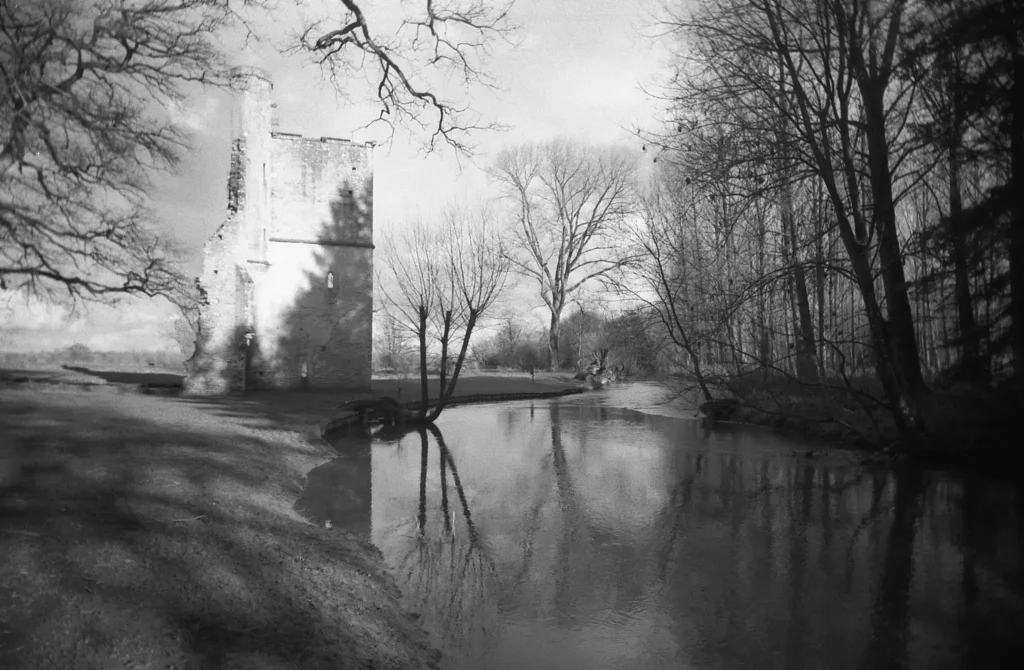
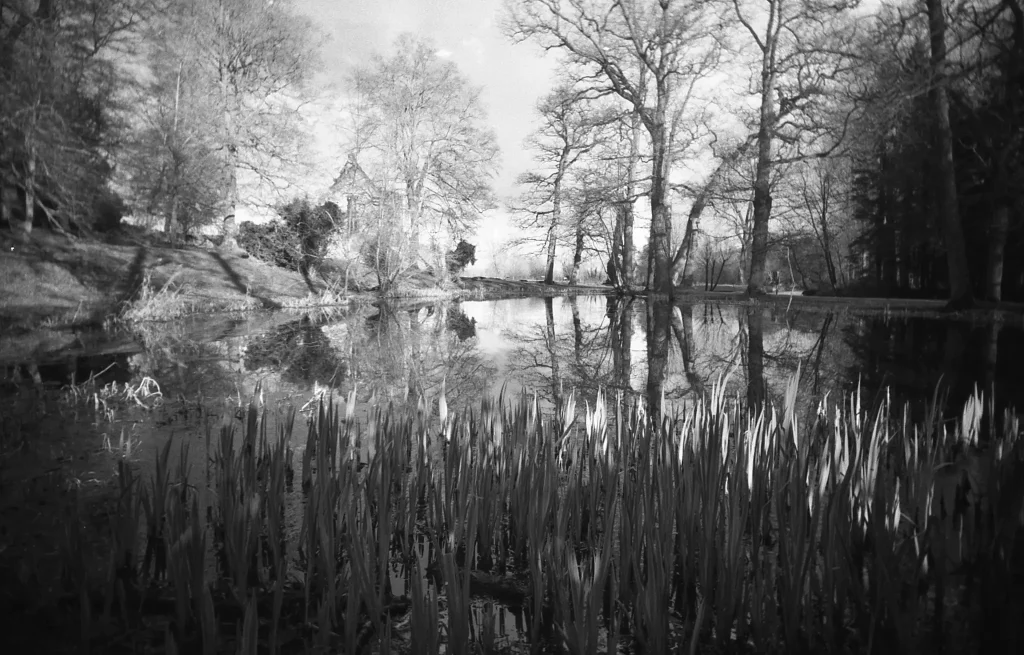
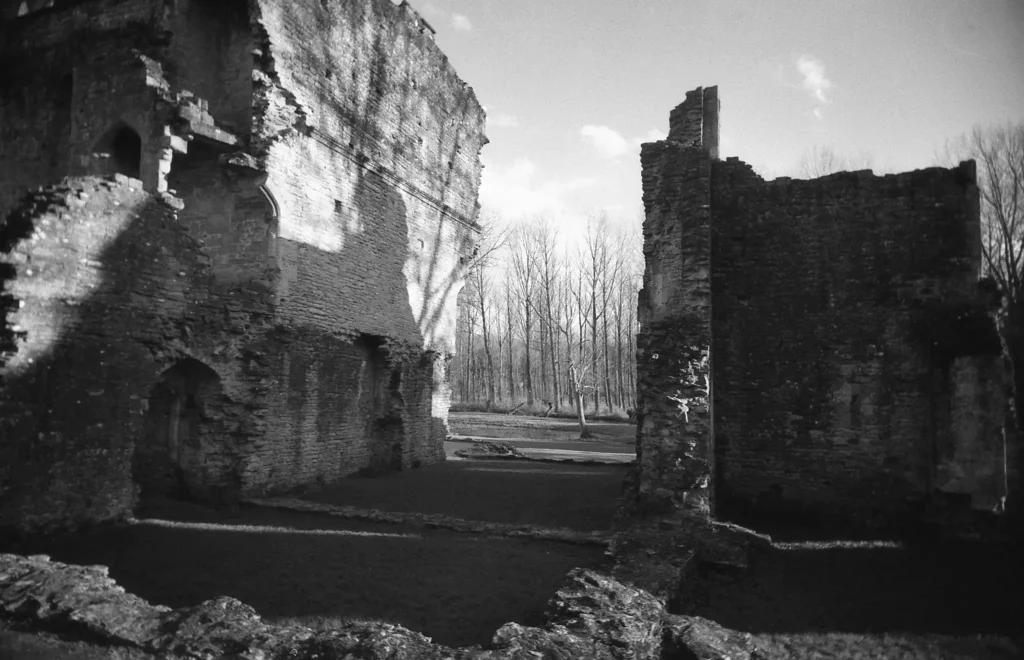
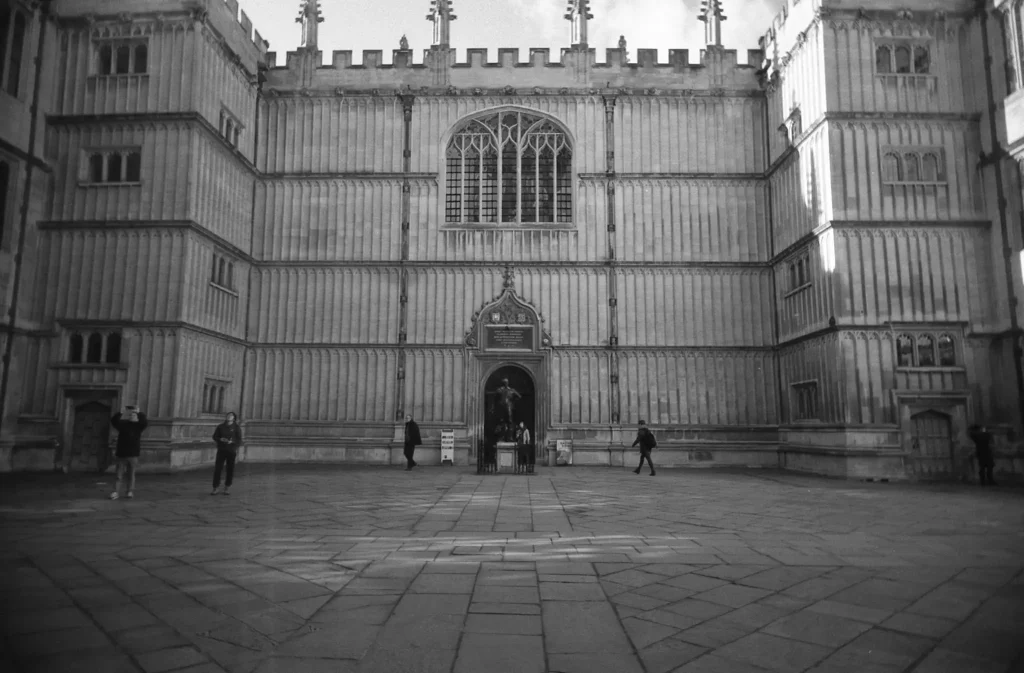
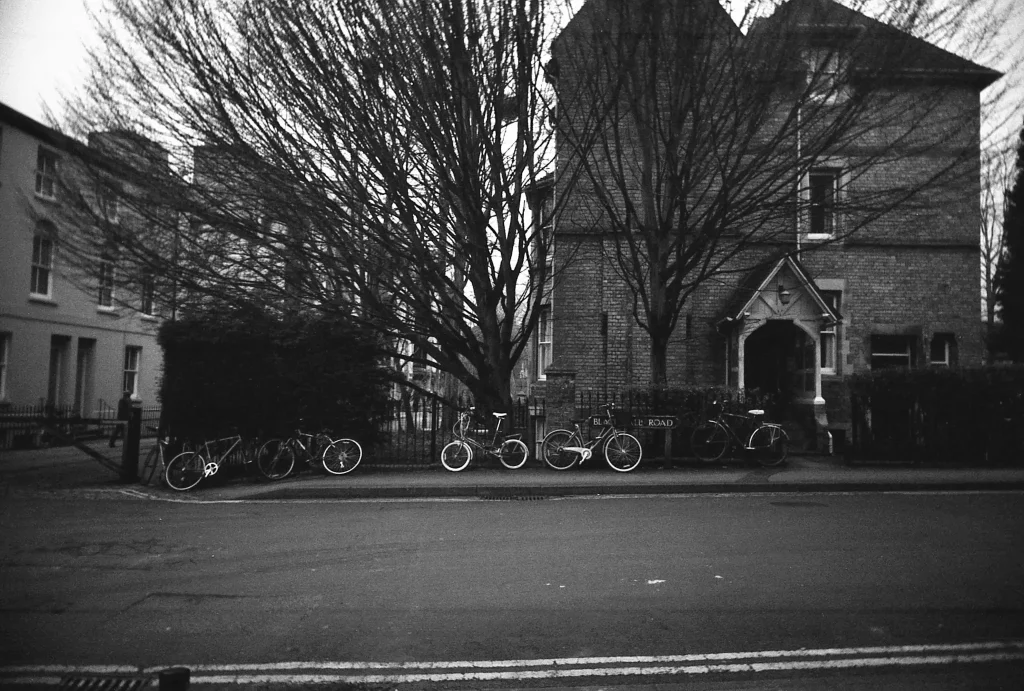
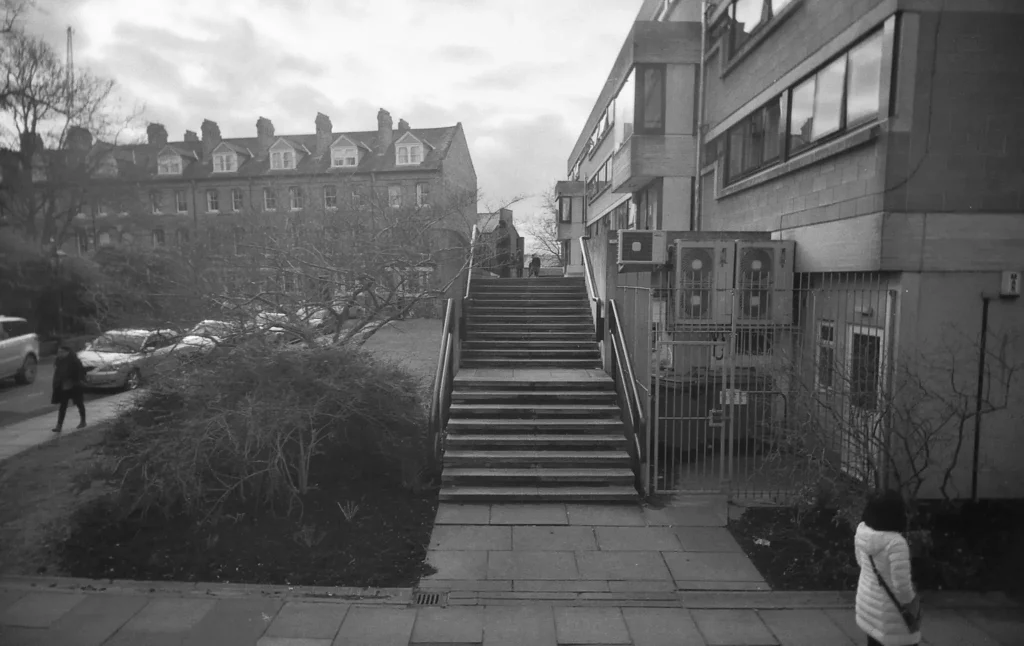
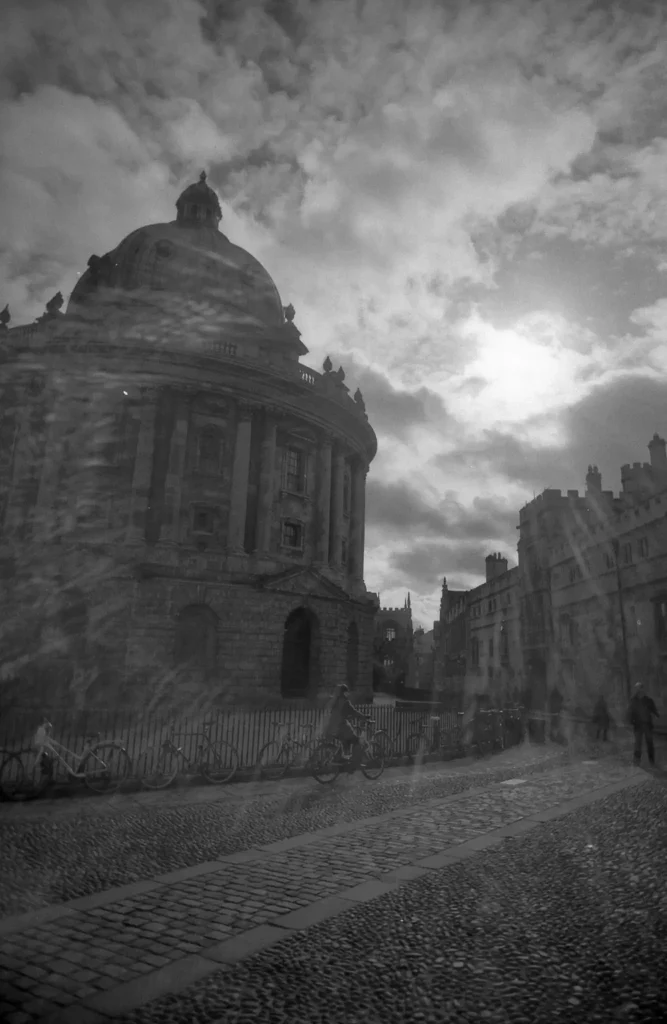
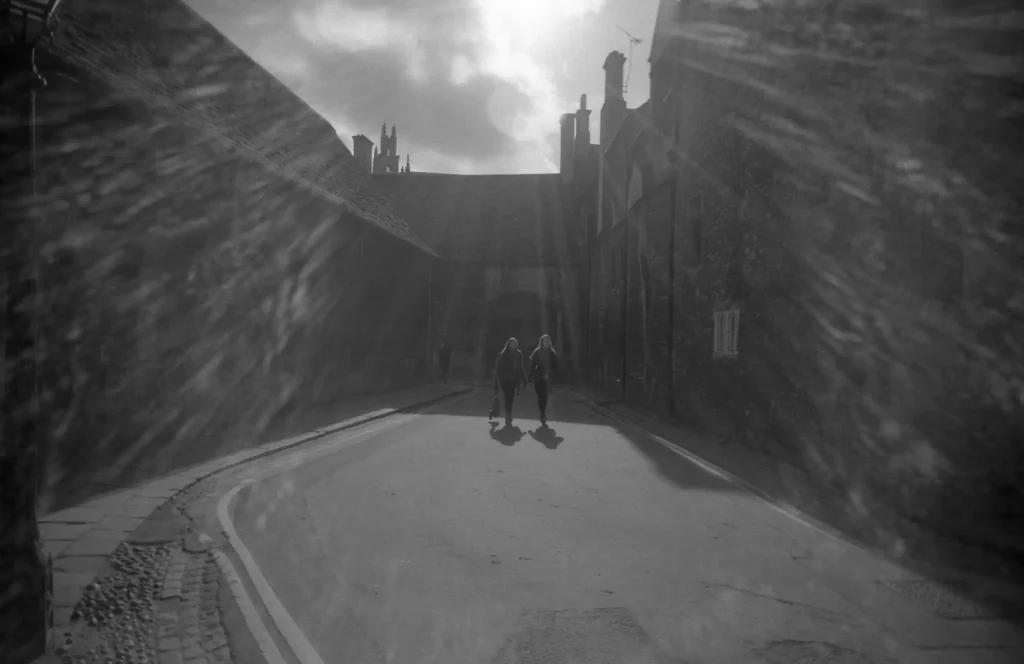
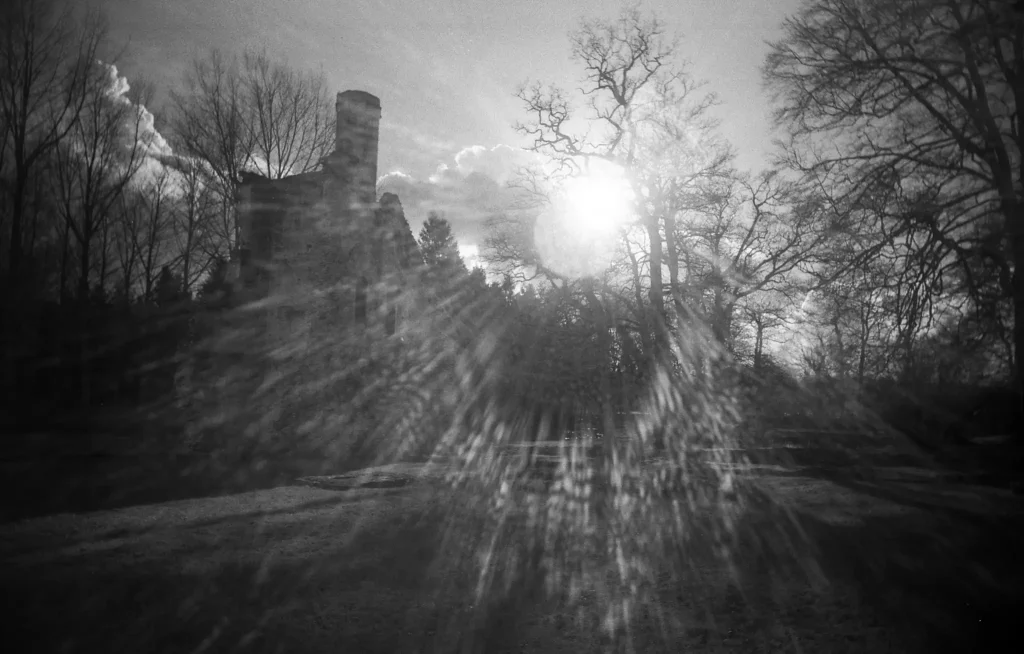
So there it is. The Vivitar Ultra Wide and Slim – a cheap plastic camera that has possibilities. Would I go to the expense of putting another roll of film in it and pay for processing? Yes, in the right situation I would, because how many 35mm compacts have a super-wide 22mm lens? It’s nice to have it on standby and it has the capability to come up with some interesting photojournalistic street shots and people portraits in the right hands.
Share this post:
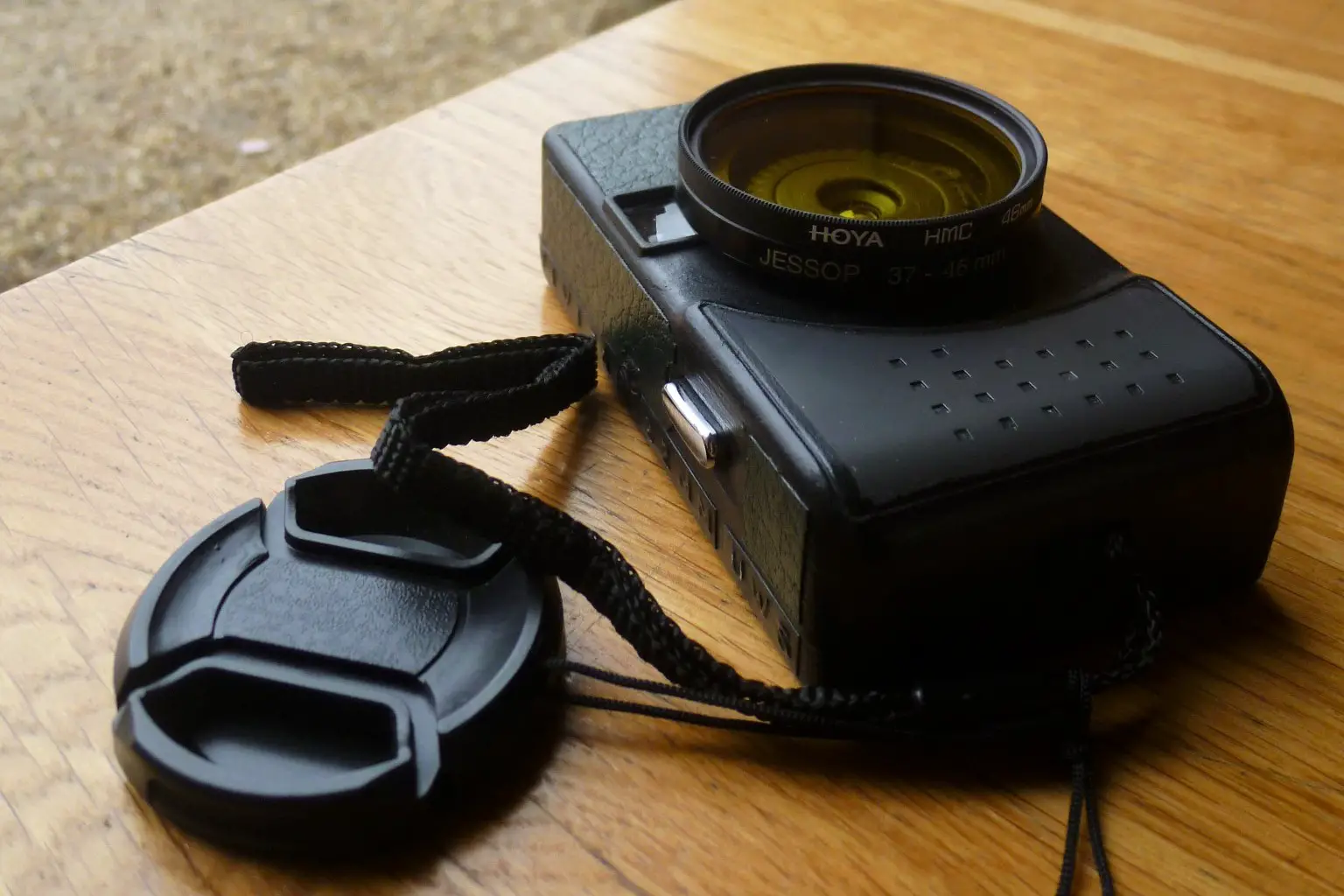








Comments
Hamish Gill on Vivitar Ultra Wide and Slim – Modifying & Shooting – by Charles Higham
Comment posted: 01/03/2016
Comment posted: 01/03/2016
Comment posted: 01/03/2016
Comment posted: 01/03/2016
Comment posted: 01/03/2016
Comment posted: 01/03/2016
Comment posted: 01/03/2016
Comment posted: 01/03/2016
Comment posted: 01/03/2016
Ray on Vivitar Ultra Wide and Slim – Modifying & Shooting – by Charles Higham
Comment posted: 02/03/2016
Ray on Vivitar Ultra Wide and Slim – Modifying & Shooting – by Charles Higham
Comment posted: 03/03/2016
Oh, and just in case this gets confusing, I'm a different Ray!
Salvador Moreno on Vivitar Ultra Wide and Slim – Modifying & Shooting – by Charles Higham
Comment posted: 03/03/2016
http://indulgy.com/post/zZKzZ1hp61/ultra-wide-super-fat-lens-camera-super-wide-angl
Charles on Vivitar Ultra Wide and Slim – Modifying & Shooting – by Charles Higham
Comment posted: 04/03/2016
Comment posted: 04/03/2016
Charles on Vivitar Ultra Wide and Slim – Modifying & Shooting – by Charles Higham
Comment posted: 05/03/2016
https://fractionsoflight.wordpress.com/2016/03/05/modified-nikon-af210-industar-lens-as-yet-untested/
Comment posted: 05/03/2016
Charles on Vivitar Ultra Wide and Slim – Modifying & Shooting – by Charles Higham
Comment posted: 06/03/2016
Comment posted: 06/03/2016
Charles on Vivitar Ultra Wide and Slim – Modifying & Shooting – by Charles Higham
Comment posted: 06/03/2016
Comment posted: 06/03/2016
Comment posted: 06/03/2016
Comment posted: 06/03/2016
Charles on Vivitar Ultra Wide and Slim – Modifying & Shooting – by Charles Higham
Comment posted: 19/03/2016
https://fractionsoflight.wordpress.com/
Comment posted: 19/03/2016
Comment posted: 19/03/2016
Comment posted: 19/03/2016
oli on Vivitar Ultra Wide and Slim – Modifying & Shooting – by Charles Higham
Comment posted: 14/02/2018
23 frames / A Whole Roll of Fujifilm Superia 400 in a Vivitar Ultra Wide & Slim - #FullRollFriday - by Charles Higham - 35mmc on Vivitar Ultra Wide and Slim – Modifying & Shooting – by Charles Higham
Comment posted: 12/06/2020
Dave Powell on Vivitar Ultra Wide and Slim – Modifying & Shooting – by Charles Higham
Comment posted: 01/12/2020
Comment posted: 01/12/2020